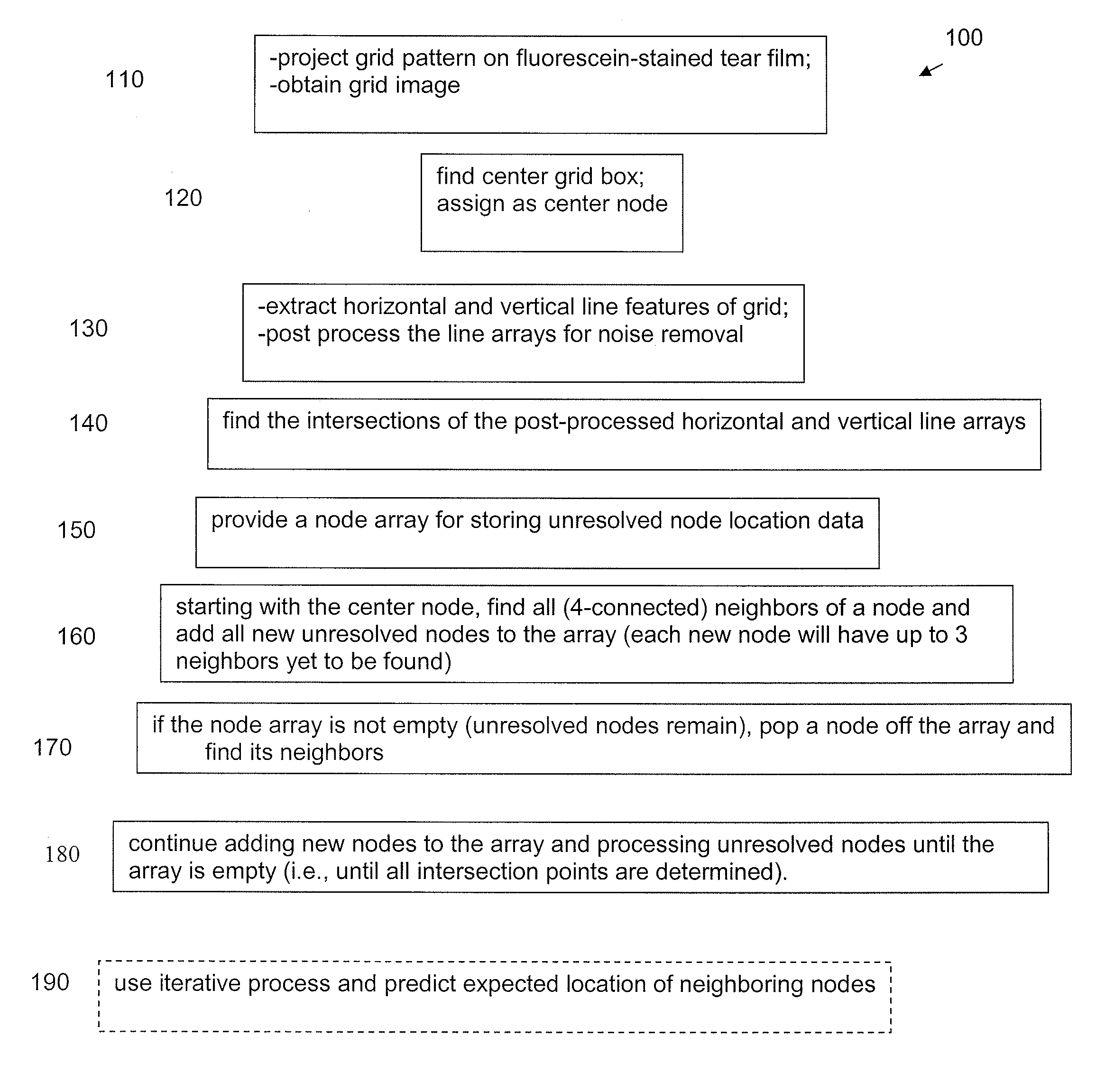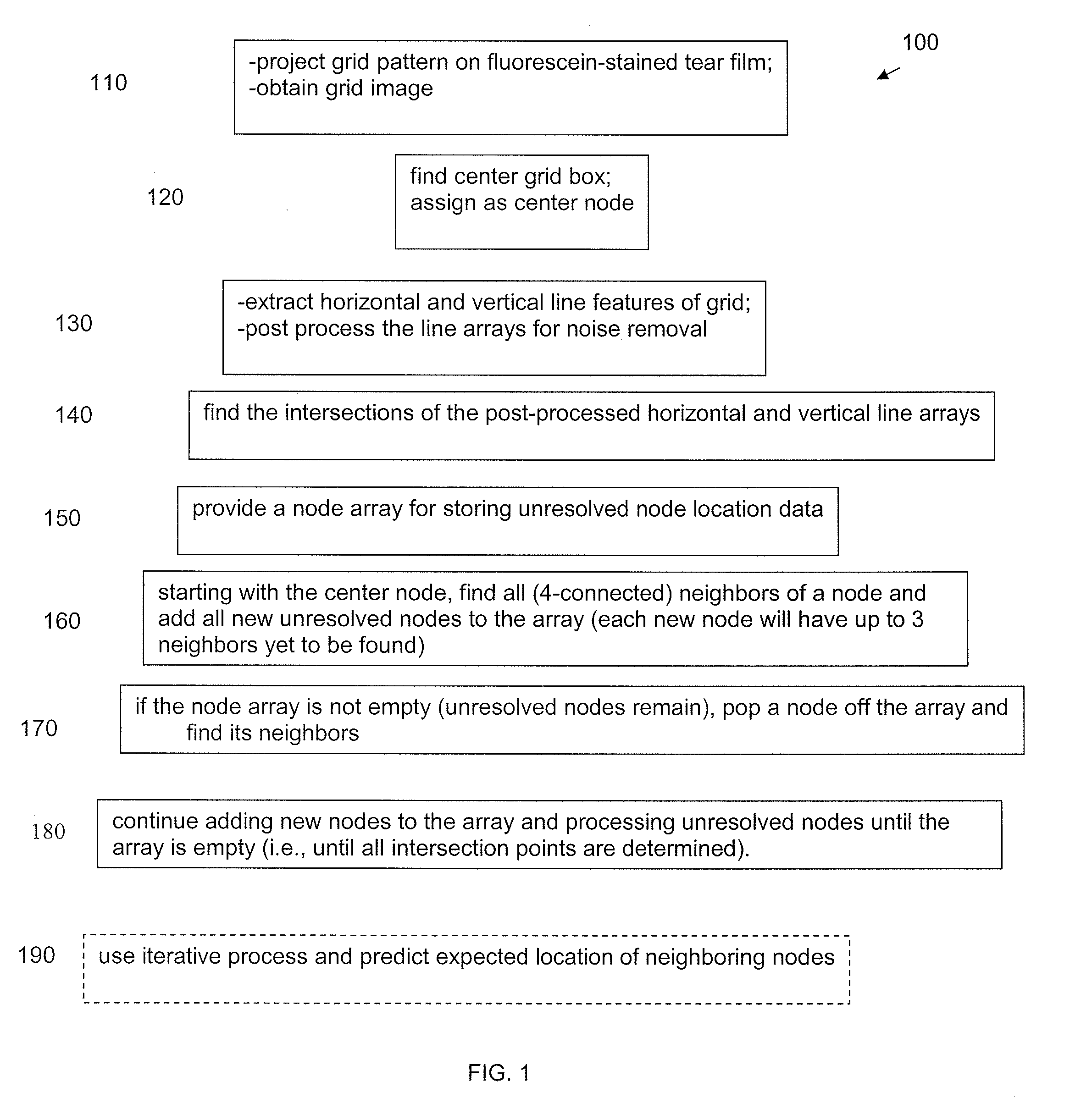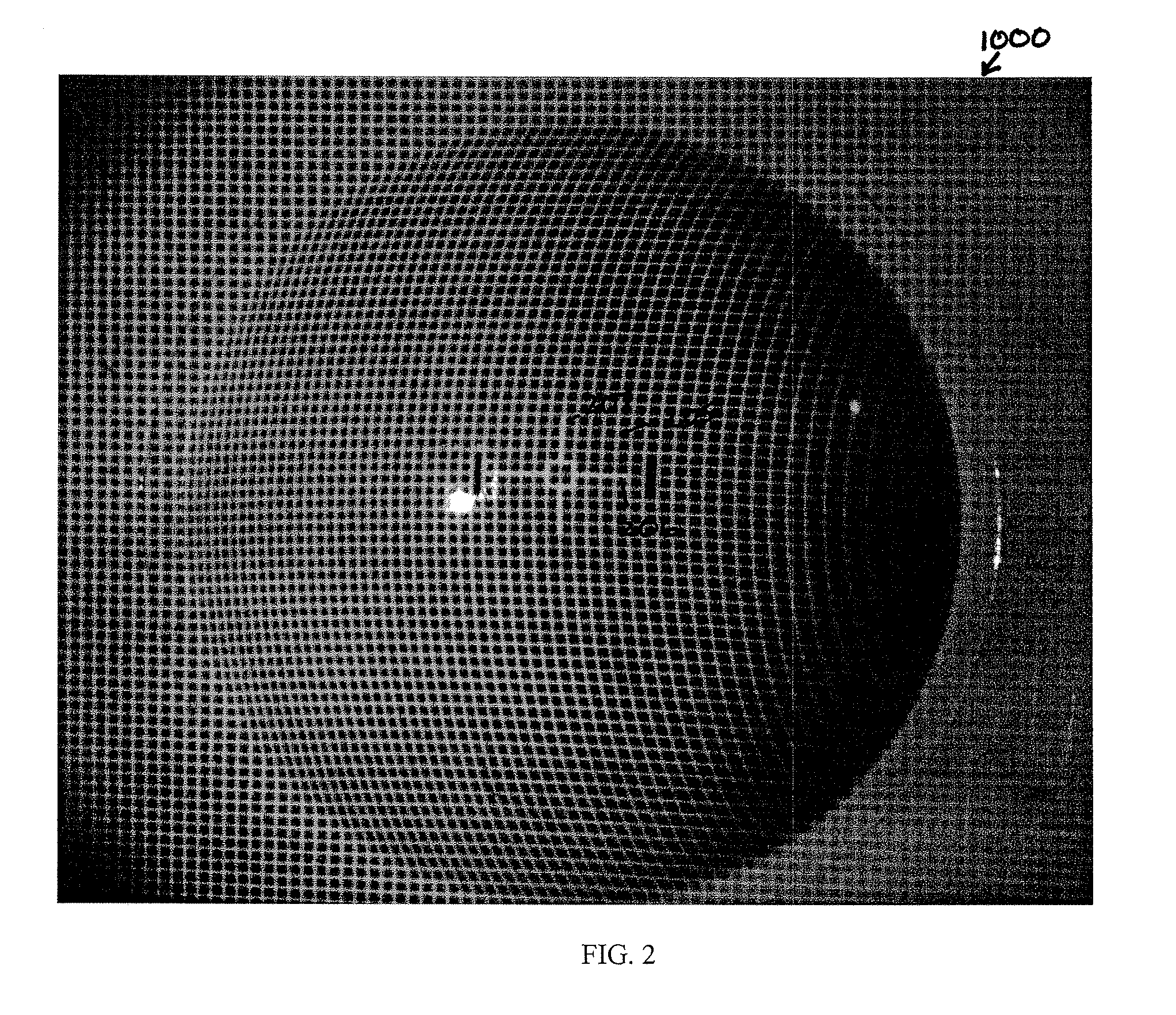Corneo-scleral topography system
a topography and corneal technology, applied in the field of ophthalmic topography measurement system, can solve the problems of reducing the inherent measurement accuracy, providing an exact registration of individual images, and multiple reflections of mires, so as to reduce the total processing time of images, accurate and detailed corneal surface measurements, and quick processing
- Summary
- Abstract
- Description
- Claims
- Application Information
AI Technical Summary
Benefits of technology
Problems solved by technology
Method used
Image
Examples
Embodiment Construction
[0043] An embodiment of the invention is directed to an image processing algorithm that involves process steps for determining the topography of a corneo-scleral target surface.
[0044] The process steps 100 of the image processing method are outlined in FIG. 1 and are discussed in detail below. In general terms, the process 100 allows one to extract the grid features from an advanced rasterstereography-based corneo-scleral topography (RCT) system captured grid image. Once the features have been extracted, the target surface topography can be reconstructed and displayed. It is particularly advantageous that the total time for processing the image can be less than 2.0 seconds. In an exemplary aspect, the processing time for the algorithm running on a 3 GHz PC is about 0.2 seconds.
[0045] Referring to FIG. 1, at step 110 an exemplary cyan grid pattern is projected onto a fluorescein-stained tear film of a corneo-scleral surface to be measured, and an image of the fluorescing grid is ob...
PUM
 Login to View More
Login to View More Abstract
Description
Claims
Application Information
 Login to View More
Login to View More - R&D
- Intellectual Property
- Life Sciences
- Materials
- Tech Scout
- Unparalleled Data Quality
- Higher Quality Content
- 60% Fewer Hallucinations
Browse by: Latest US Patents, China's latest patents, Technical Efficacy Thesaurus, Application Domain, Technology Topic, Popular Technical Reports.
© 2025 PatSnap. All rights reserved.Legal|Privacy policy|Modern Slavery Act Transparency Statement|Sitemap|About US| Contact US: help@patsnap.com



